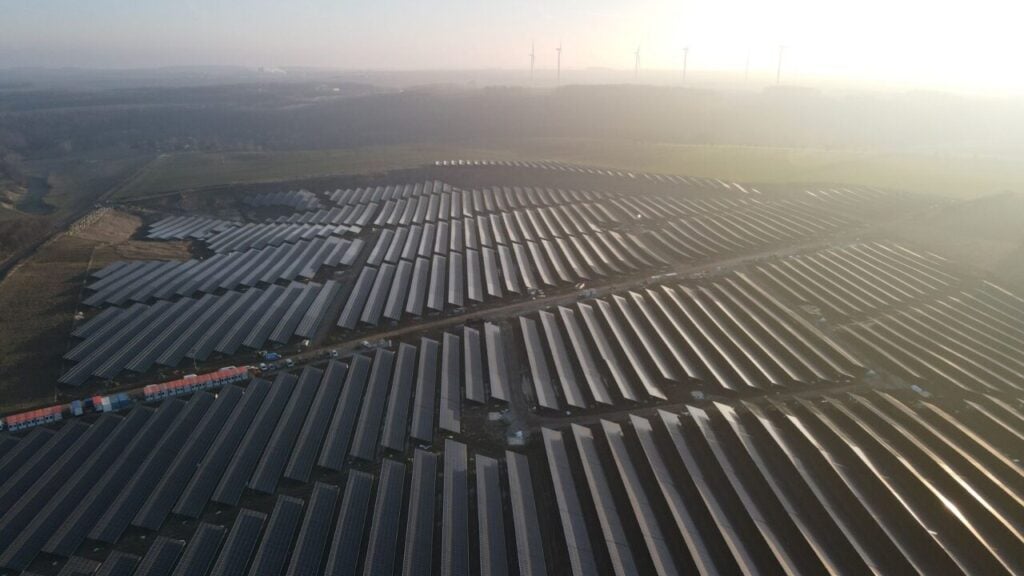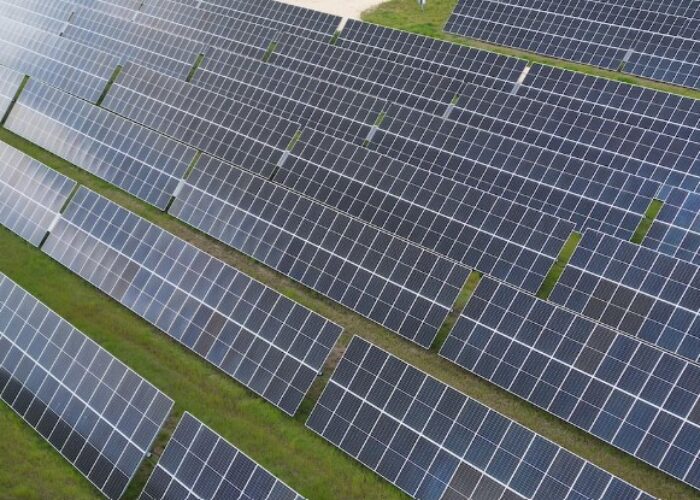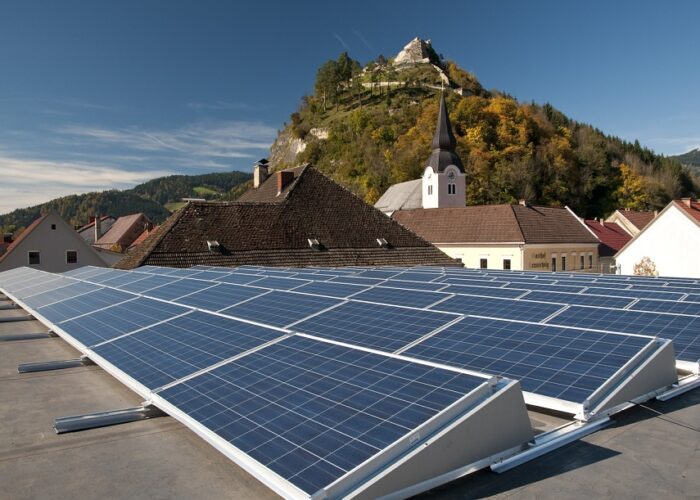
A modestly-sized solar PV project in central Germany might have just ushered in a new era of renewable power’s relationship with the grid.
The 37.4MWp Schkölen solar project, a collaboration between Enerparc subsidiary Sunnic Lighthouse, Nordic electricity company Entelios and transmission system operator 50Hertz, was prequalified for Germany’s automatic frequency restoration reserve (aFRR) services this week, the first ground-mounted PV project to do so.
Try Premium for just $1
- Full premium access for the first month at only $1
- Converts to an annual rate after 30 days unless cancelled
- Cancel anytime during the trial period
Premium Benefits
- Expert industry analysis and interviews
- Digital access to PV Tech Power journal
- Exclusive event discounts
Or get the full Premium subscription right away
Or continue reading this article for free
This means the project will be able to participate in grid balancing mechanisms, a part of the power system that has historically been reserved for conventional power plants, largely because intermittent renewables, like solar and wind, were perceived to be too unreliable.
Crucially, the plant has bidirectional aFRR capability, meaning it can rapidly curtail its output during periods of high generation, reducing the systems’ reliance on fossil fuel plants for negative control energy. It can also rapidly respond and produce power at times of low generation, even during periods of negative pricing. This could transform the role of solar power from a variable generation source to a pillar of grid stability.
The first solar prequalification
At the time of the announcement, the managing director of Sunnic Lighthouse, Arved von Harpe, said the project was a “paradigm shift … for the entire energy system.”
“It’s been a long time on my wish list, starting all the way back in 2013 when one of my colleagues wrote his bachelor thesis on the possibility of providing balancing services to the grid using solar energy,” von Harpe tells PV Tech Premium exclusively.
Back then, when he brought the proposal to Germany’s transmission system operators (TSO), the door was slammed in his company’s face. But now, as the energy transition has gathered pace and Germany has been phasing out coal and nuclear plants, TSOs realised that balancing services would have to come from somewhere else.
“They called us a year and a half ago and said, ‘You tried 12 years ago, we remembered, maybe you want to try again, and this time we’ll support it actively’. That was 50Hertz,” he says.
The prequalification process had two parts, which led Sunnic to lean on its parent company, Enerparc, and to make a new deal with Entelios, a balancing pool aggregator with “years of experience” participating in the aFRR market, according to von Harpe.
The first part was technical; making sure the project’s connection is stable, reserve power is present and obtaining a critical infrastructure certification. This was handled by Entelios, which von Harpe says “overcame most” of the technical challenges of prequalification.
“We installed hardware from Entelios, a box they provide which connects to the TSO, and from there we are part of their balancing group.”
The second part was providing the TSO with forecasts, which Sunnic did by leveraging Enerparc’s portfolio of projects and its own in-house expertise on data and forecasting. “We were able to push these parts through the prequalification process without having to rely on a third party, which would be the power plant operator,” von Harpe says.
Rapid response
A grid-balancing solar asset can be more flexible than a traditional gas plant, says von Harpe. The latter has to either be on or off, either shutting down to lessen grid supply or turning on to add it. But a solar array can “go both ways,” von Harpe says. “Say we’re prequalified for 30MW capacity, I could produce 15 and then I could either ramp up or ramp down.”
Solar arrays can also provide power far quicker than any other source, he says, giving them an edge in aFRR balancing actions. “We can react to a signal within seconds,” he says, “whereas a wind or gas turbine needs one or two minutes to react and come to the level requested by the TSO.”
This speed gives the Schkölen plant an advantage during negative or very low pricing hours, such as the early afternoon on a sunny Sunday in June. The plant can produce power very cheaply in those hours, according to von Harpe, thanks to the economics of ground-mounted solar, and shut down at a moment’s notice. Crucially, this will be cheaper and faster than comparable aFRR gas or wind plants.
Beyond its own commercial and competitive advantages, he says that greater renewables participation in the aFRR market “will drive prices down, there’s no question about that, and thus reduce system costs for everybody quite significantly.”
He forecasts that between solar, batteries and perhaps some wind assets, the cost of grid balancing could halve; “I don’t think that’s an unreasonable assumption, so it’s highly beneficial for every power consumer.”
Why is it a ‘paradigm shift’?
These will be significant impacts if grid-balancing solar spreads more widely. But the change might be bigger still.
“The reason this took so long is that there was a high level of resistance from the incumbent players,” von Harpe says. “Up until now the argument was always that renewables were all about production and volume-based and we need all these gas plants on standby to balance all the [renewable energy] plants. That’s rubbish.”
He says the balancing market has long been the most profitable part of some leading energy businesses, and they would “try to fly under the radar” to maintain those profits.
He says that status quo was maintained until one or two years ago, when the first onshore wind project was prequalified, and now has been undone with the approval of the Schkölen solar plant.
“I think this last level of resistance has been broken. That’s what I mean with the paradigm shift—the market becomes more democratised, there will be more participants, lower prices for everybody and finally renewables will take over the system responsibility.”
This might also mean new revenue streams for solar energy asset owners. Sunnic itself has more projects it intends to prequalify for aFRR, and if they are successful other players will likely follow suit. Solar has the lowest opportunity cost of any generation asset, von Harpe says, as it is tied to the cost of the feed in tariff: “I think Schkölen is 5.2 cents,” he says, which is paid to the project if it is required to shut down, to account for the lost tariff. “Show me one other asset that has that low an opportunity cost,” he says.
From a market perspective, more solar in the grid balancing mix, driving costs down, will reduce revenues for energy storage operators, which rely on aFRR as part of their assets’ revenue stack. The same is true for older pumped storage and gas assets. But the economics of solar in the grid balancing market, now that the door has been opened, may prove inarguable.






